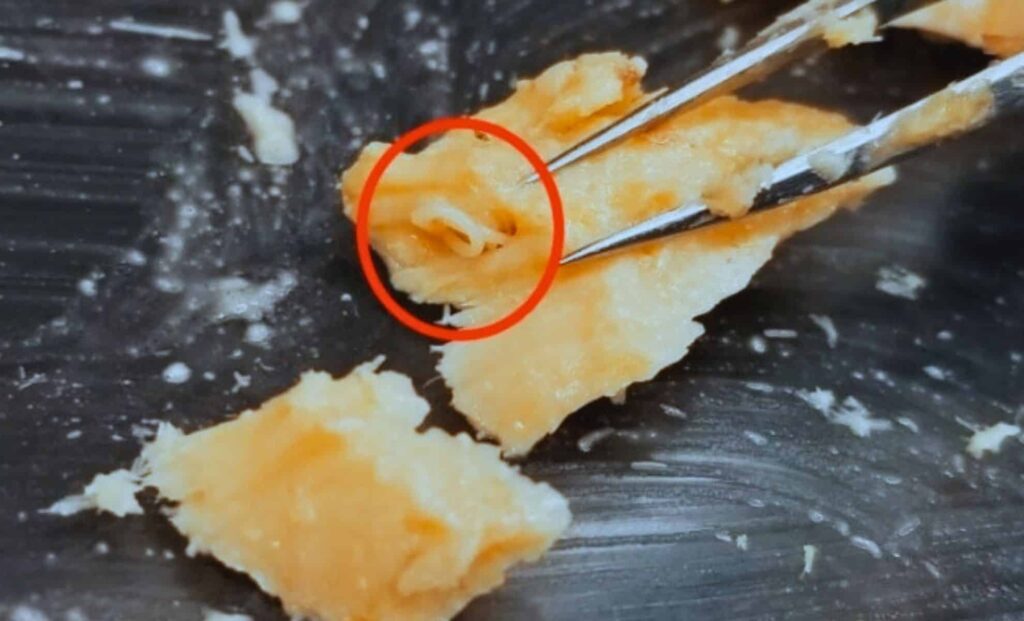Imagine stumbling across a relic from the past, tucked away in an old, dusty box. What appears to be just another forgotten object could hold secrets that might change how we view the present. This was the case when ecologists from the University of Washington recently analyzed cans of salmon dating back to the 1970s, discovering something unexpected inside: parasitic worms. Their findings, published in Ecology and Evolution, offer a valuable look into the health of the ocean ecosystem over the last four decades.
The Unexpected Discovery of Marine Parasites
In an unlikely collaboration with the Seafood Products Association in Seattle, the research team was handed boxes of old canned salmon—some sealed since the 1970s. These cans, originally preserved for quality control, would not have been on anyone’s radar as a scientific resource.
However, Chelsea Wood, a parasite ecologist, saw potential where others might have seen junk. Along with researcher Natalie Mastick, she began the process of dissecting these long-forgotten fish fillets. What they found was far from expected: anisakid worms, tiny parasites that thrive in the muscles of fish.
“These marine parasites might make stomachs turn,” said Wood, “but they’re completely harmless to humans after the canning process kills them.” What fascinated the team wasn’t just the worms themselves, but what they symbolized—a snapshot of an oceanic food web as it existed decades ago.
The presence of these worms, she explained, signals a healthy marine ecosystem, where the necessary host species were plentiful enough to support the parasites’ lifecycle.

A Closer Look at the Worms’ Role in the Ecosystem
Anisakid worms have a complex life cycle that depends on marine mammals, krill, and fish like salmon. Their journey begins when marine mammals excrete eggs into the water, which hatch into larvae. These larvae are consumed by krill, which are then eaten by fish. The cycle completes when marine mammals eat the infected fish. If the balance of this food web is disrupted—such as by a drop in marine mammal populations—the number of parasites will decrease accordingly.
For the researchers, the worms were more than just a curiosity. They were powerful indicators of the stability of the ocean’s ecosystems over time. By analyzing the contents of 178 cans collected from the Gulf of Alaska and Bristol Bay, the team could track changes in worm prevalence over a 42-year period.
Salmon Species Show Different Trends
While the worms were present in most of the cans, the frequency and intensity of their presence varied across different salmon species. The team analyzed four types of Alaskan salmon: pink, chum, coho, and sockeye. Over the years, pink and chum salmon showed a noticeable increase in anisakid worm prevalence, suggesting that the parasites had access to stable, healthy hosts. On the other hand, coho and sockeye salmon exhibited little to no change, leading the researchers to question why certain species seemed unaffected.


“Seeing their numbers rise over time, as we did with pink and chum salmon, indicates that these parasites were able to find all the right hosts and reproduce,” said Natalie Mastick, the study’s lead author. While the researchers couldn’t identify the specific species of anisakid worms in each can due to degradation caused by the canning process, the overall trends still provided meaningful insights.
Using Canned Salmon as a Biological Archive
This unusual approach to studying ocean health—using canned salmon as a time capsule—could have far-reaching implications for ecological research. By examining old cans of fish, the researchers were able to trace historical parasite trends without relying on expensive, long-term fieldwork. The study opens up a new frontier in ecological research, particularly in understanding how marine ecosystems have changed over decades.
More importantly, it provides vital clues to the health of Alaskan waters, which have been undergoing significant changes due to factors such as climate change, overfishing, and the recovery of marine mammal populations. In a time when ocean health is at the forefront of scientific and public concern, such research could offer invaluable data on the long-term shifts occurring beneath the waves.

